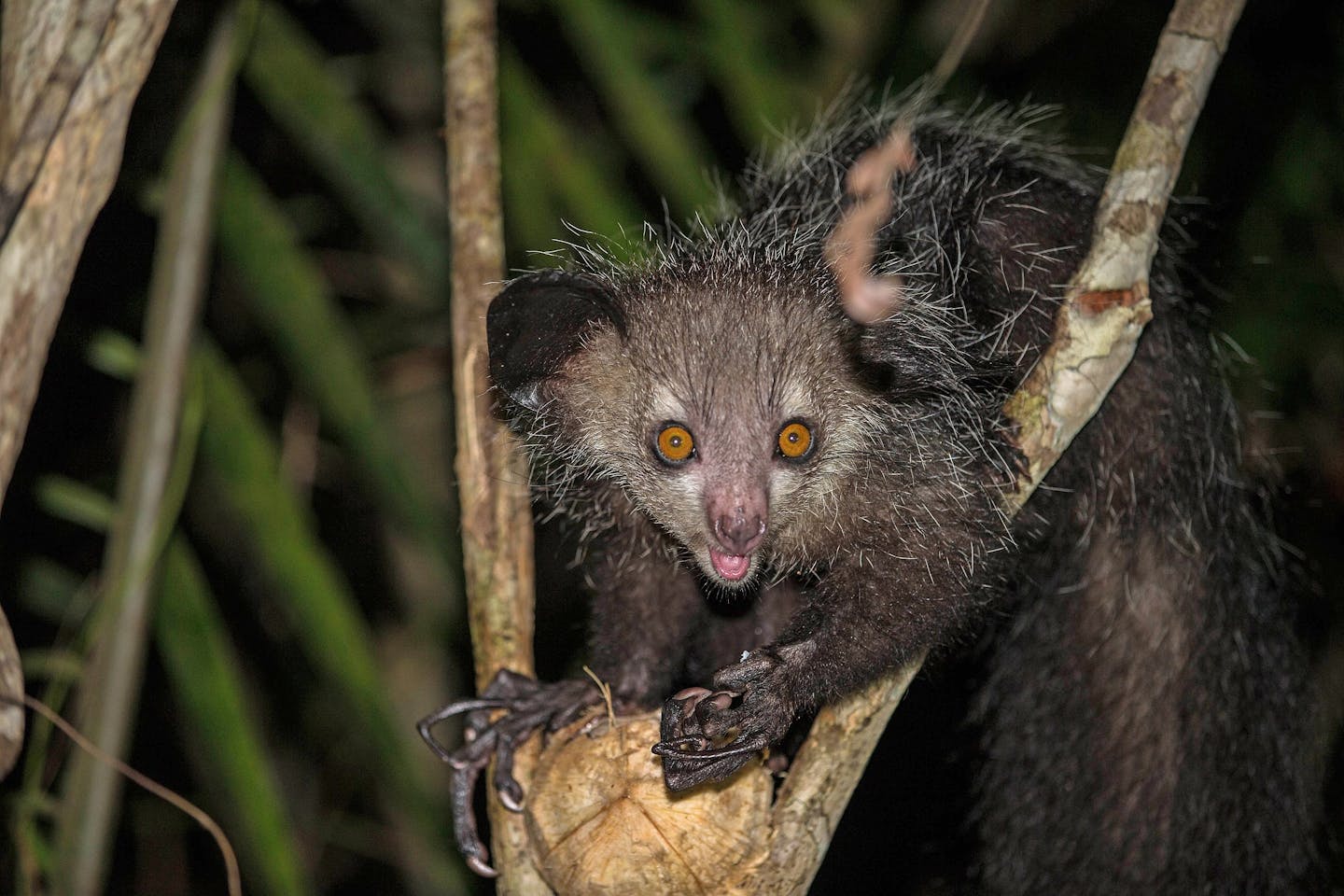Aye-aye: The enigmatic life of the world's largest nocturnal primate
One Earth’s “Species of the Week” series highlights a relatively unknown and fascinating species to showcase the beauty, diversity, and remarkable characteristics of our shared planet.
Under the shroud of night on the Island of Madagascar, a peculiar creature emerges from the depths of the jungle—the aye-aye (Daubentonia madagascariensis), one of the most peculiar of our hominid cousins.
With rounded ears like a bat, bulging eyes of an owl, teeth of a rat, dexterous fingers of a raccoon, and a black, bushy tail similar to a squirrel’s — although much larger — the aye-aye is a testament to the wonders of evolution.
As a member of the lemur family, it stands as the world's largest nocturnal primate, its features finely tuned for life in the shadows.
Evolved to thrive in the night
While most primates, including humans, rely heavily on vision for their daily activities, the aye-aye has evolved to thrive in the darkness. With a keen sense of sound, touch, and scent, these creatures showcase an unconventional approach to finding food.
Using their exaggerated ears and an elongated middle finger, even more slender than the rest, aye-ayes tap on branches to locate hollow areas—a technique reminiscent of woodpeckers. Employing slanted, rodent-like incisors that continuously grow throughout their lives, they gnaw into bark, creating a hole.
They deploy their specialized and muscular fourth finger, armed with a pointed claw, to extract their meal through this orifice. This distinctive feeding behavior, percussive foraging, is shared only with the elusive striped possum.
Helping their ecosystem flourish and balance
Omnivorous, the aye-aye eats seeds, nuts, fruits, nectar, fungi, wood boring, insect larvae, and honey. With this diet, they help disperse fruiting tree seeds and serve as important predators of wood-boring beetle larvae, helping their ecosystem flourish and balance.
Arboreal dwelling and mating rituals
Measuring up to a meter in length and weighing just over two kilograms, aye-ayes spend their lives in the treetops, rarely venturing down to the forest floor. Nestled in leaves and vines, their spherical nests with single-entry holes dot the forks of rainforest branches.
Typically solitary, aye-ayes mark their territory with scent, though males can tolerate each other within overlapping domains—until the allure of a female's call beckons.
In the realm of aye-ayes, females dominate, and males remain confined until copulation concludes. The mating ritual takes about an hour, resulting in a single offspring born to a female every two to three years.
Threats laden with superstition
The aye-aye faces grave threats on multiple fronts. Native to Madagascar, the creature is often considered a harbinger of bad omens, leading to the unfortunate practice of killing them on sight. Their name comes from the Malagasy people referring to it as "heh heh," a reluctance to utter a proper name due to superstitions.
Habitat destruction, a consequence of widespread land development across the island, exacerbates the aye-aye’s peril. Their population has seen a 50% decline over the past three decades, a trend expected to continue unless halted by conservation.
Brought back to life thanks to conservation efforts
In 1933, the species was thought to be extinct but was rediscovered in 1957. Conservation efforts in 1966 transported nine individuals to Nosy Mangabe, an island off eastern Madagascar only accessible by small boat and part of the larger Masoala National Park complex.
Today, it’s estimated there are between 1,000 and 10,000, aye-ayes left in the world. With the remote location of the nature preserve and the species’ covert lifestyle, it’s been difficult for biologists to get a precise number.
The key to the aye-aye’s survival lies in education and awareness. By shedding light on the aye-aye’s ecological importance and unique features, we can contribute to the ongoing efforts to conserve this extraordinary creature for generations to come.



